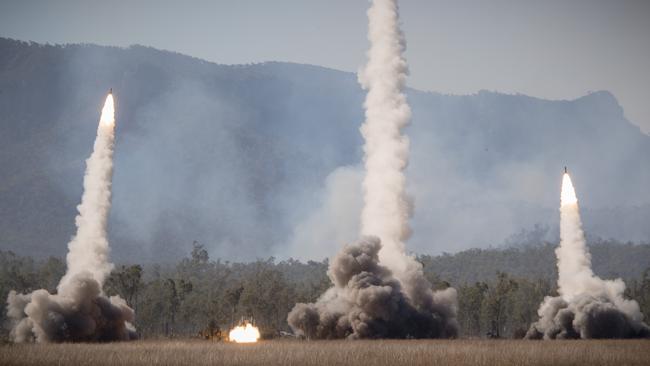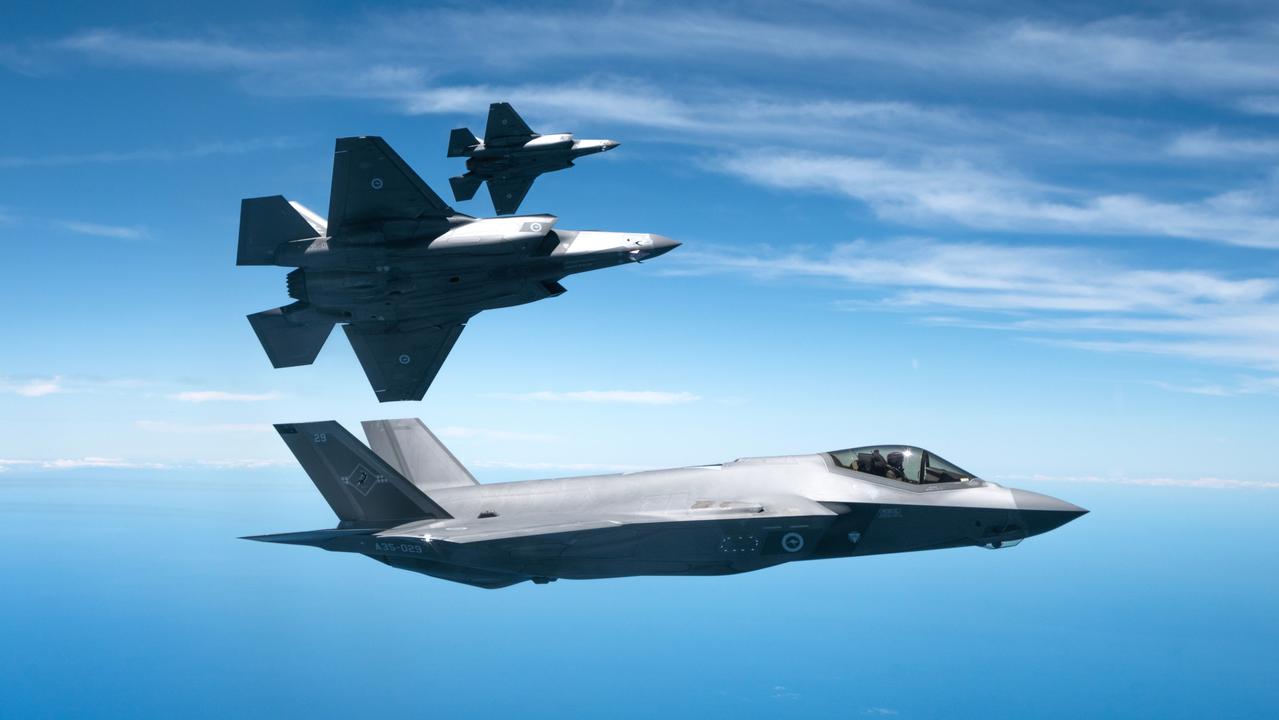Rocket artillery systems for Australia on order
The plan is that Australia eventually will add more advanced rockets to its inventory that will be able to fly more than 500km.

Having been foreshadowed in the 2016 Defence White Paper, it is now official following an announcement on January 4 that Australia will buy the HIMARS multiple launch rocket system from the US, with deliveries to begin around 2027.
The exact timing is up to Washington because after the success of the system in Ukraine it is in great demand, and the US State Department will decide on priorities for delivery.
Ukraine has been supplied with only the basic, somewhat dated version of the system for fear of antagonising Russia and risking further escalation of the conflict.
Each unit consists of a box of six trainable 227mm diameter launch tubes on an armoured truck chassis. These can ripple fire all rockets in a salvo lasting a few seconds – or as is more common, fire one or two and then immediately drive to another spot before enemy counter-battery fire can arrive.
The rockets supplied to Ukraine have pinpoint accuracy thanks to a GPS/INS navigation unit located near the 90kg warhead in the nose and they have a range of 92km, even though longer-range versions are available. Each one is programmed with target co-ordinates via a fire-control unit located in the cab of the truck.
The six missiles in the pod can – and often are – launched against six separate targets. Because the launcher is trainable, it can rapidly point in a different direction for the next strike.
All six rockets are packed in a disposable carbon fibre container. Once they have been used, a single trained operator using a built-in crane can lift the next pack into place in under 10 minutes, giving HIMARS a rapid rate of sustained fire.
The limitation of the Ukraine system is that their rockets are relatively short range and once they have been fired the target coordinates cannot be changed during flight.
This makes them devastatingly effective against fixed targets such as enemy bridges, supply depots, barracks and airfields – basically anything that does not move.
It is believed that to date, Ukraine has destroyed around 500 Russian targets – though some of these, such as large reinforced concrete bridges, have needed several hits to render them ineffective.
Undoubtedly thousands of Russian soldiers who have had the misfortune to be located inside headquarters compounds or next to ammunition dumps have been killed.
The plan is that in the future, Australia will add more advanced rockets to the inventory that will be able to fly more than 500km – and the very newest of which will be able to switch targets during flight.
Known as the Precision Strike Missile – or PrSM in military shorthand – it will also have a seeker in the nose meaning it will be very effective against moving targets such as armoured vehicle concentrations or even ships at sea.
The US Marine Corps has already demonstrated the reverse principle by using a HIMARS on a transport ship to destroy a land target 70km away – and there is no reason why the Australian Army could not do the same thing from the deck of a Canberra class LHD.
Australia will receive 20 HIMARS units – and one of the interesting features of the sale is the meagre quantity of ammunition being ordered, which seems to be something of an Army tradition. We have bought only 120 of the 227mm rockets – of various configurations – which is only enough for our entire fleet to fire a single salvo.
Poland, which has just bought 18 HIMARS units identical to ours will receive about 2000 comparable rockets.
Australia is also getting 10 Cold War generation ATACMS weapons with a range of 500km – only one of which can fit in a launcher because of their greater size – while Poland will receive 45 of them. This is reflected in the price: Australia will pay $560m for our package while Warsaw is shelling out more than $10bn for theirs.
Clearly only one purchaser is preparing for a serious war. Part of the discrepancy is that Poland fears a sudden Ukrainian collapse, which would bring an emboldened Russian Army to their long eastern border.
Forces already based in the Russian enclave of Kaliningrad – formerly East Prussia – are within striking distance of the vital Polish port of Gdansk and not much further from the capital itself, so it is not surprising that they are arming themselves to the teeth.
The relaxed attitude of Australian planners might be based on the expectation that we will build HIMARS rockets here – particularly the new-generation extremely lethal PrSM units that are soon to enter service.
Each HIMARS unit can launch two of them in all weather conditions against a variety of threats. We are contributing $70m to the US PrSM development program of $907m – the missile is in its testing phase. Defence, in its usual secretive manner, refuses to disclose the slightest detail of what we are receiving for that investment.
There are several Australian companies such as Thales, BAE Systems and NIOA that could manufacture PrSM under licence. They could also develop indigenous missiles under the Guided Weapons and Explosive Ordnance enterprise, which appears to have a $1bn budget of which almost nothing has been spent since it was established three years ago.
However, the biggest obstacle to local construction of PrSM is likely to be the US congress.
Despite many kind words that Australian planners take at face value, the end result is that the US never transfers missile technology because that would detract from their own industrial base.
The only alternative for HIMARS is to act like Poland and purchase a lot more weapons – or to develop our own. That $70m going to US industry would buy a lot of capability here.


